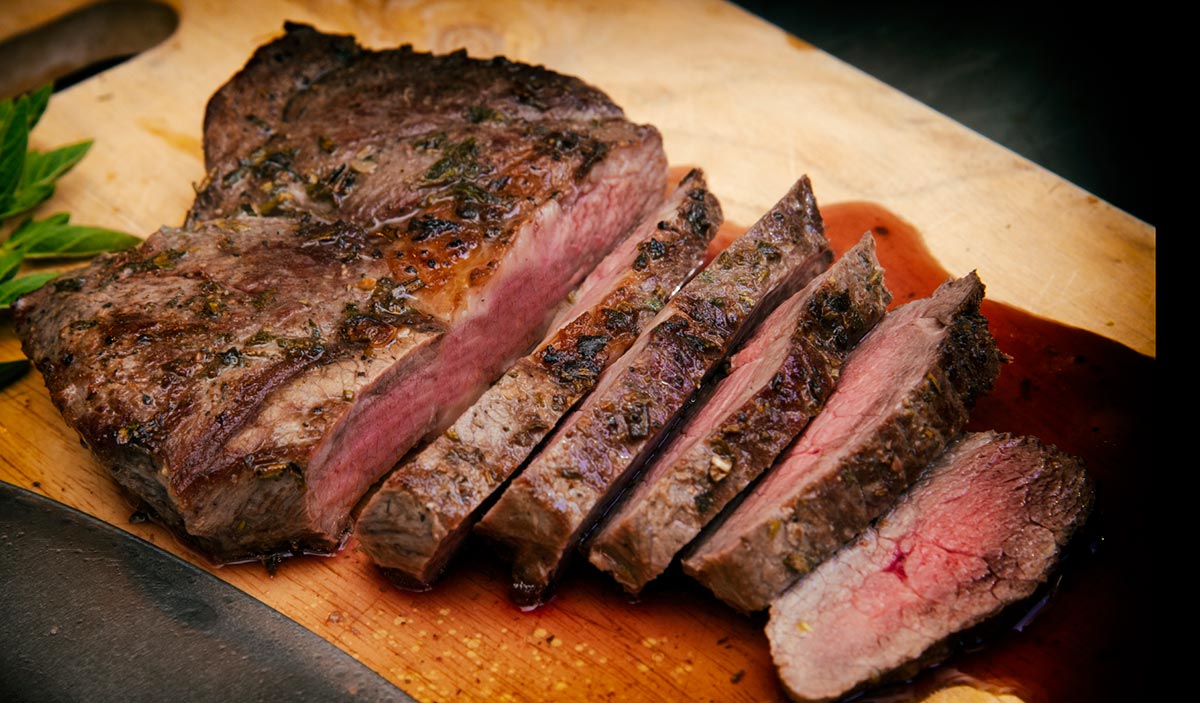Regenerative Grass-fed Beef

By: Kathy Webster
Grass-fed beef is so much more than delicious! As part of a regenerative food system, it’s beef that can have many benefits for animals, people, communities, and the planet.
Benefits animals.
Cattle live healthier lives when out on pasture eating a mix of grasses and forbs. Being a part of the ruminant family (cattle, sheep, goats, deer), their stomachs have four compartments to help them digest plants that we can’t. Their small and large intestines evolved to handle large volumes of fibrous plant material like grass. Most of the digestion of grasses and fiber occurs in the rumen, the largest of the four compartments, where billions of bacteria breakdown and help convert the feed into nutrient-dense protein. When you feed cattle cereal grains, crop residue, and nondigestible food waste, their rumen becomes an acidic environment which can lead to acidosis and liver abscesses requiring antibiotic treatment. Regenerative ranching provides cattle and other grazing animals access to a diverse diet that includes minerals and nutrients that supports their wellbeing.
Benefits people.
Grass-fed meat is considered one of the most nutrient-dense foods available. Overall, when cattle are finished on fresh grasses rich in phytonutrients, they tend to be leaner (lower in saturated fats) and have higher proportions of nutrients beneficial to human health, such as Vitamin E and A. In addition, grass-fed beef is an excellent source of B12 and Iron–important considering Vitamin B12 and Iron are the leading nutrient deficiencies in the world.
Research spanning three decades suggests that cattle on 100% grass-based diets can significantly improve the fatty acid profile. Grass-fed beef has been shown to enhance total conjugated linoleic acid (CLAs), which has been shown to help protect against chronic illnesses like cancer and heart disease. Although some studies have concluded that grass-fed beef has a distinct nutritional difference from conventional grain-finished beef, more research needs to be done with a focus on inconsistencies in grazing practices and nutritional complexities to understand the whole picture; this is the kind of nutritional research we encourage. As regenerative, grass-fed products expand, it is vital to continue to explore the nutritional complexities and the impact of production methods and their relation to human health.
Benefits communities.
Small and mid-sized family farms and ranches are failing at an alarming rate, yet at the same time, we are seeing ranchers and farmers who use holistic, regenerative practices creating jobs and providing local employment through work that includes grazing to support open spaces and wildlife habitats, as well as providing ecosystem and local food production services. The emphasis on local production may become more essential in the future as a result of consumer demands and changing economic drivers in our global economy.
Benefits planet.
Regenerative grass-fed beef is not just about food, its about our environment too. Regenerative practices help restore healthy ecosystems and wildlife habitats, reduce reliance on petrochemicals, and improve soil structure by building soil organic matter, sequestering carbon, improving water quality and water holding capacity, and increasing biodiversity above and below ground.
In conclusion: when you take the time to look at the whole system, regenerative, “grass-fed” can have benefits not just on a ranch scale, but on a global one as well. It is vital to continue to explore and research the nutritional complexities and the impact of production methods and the relation to human health.